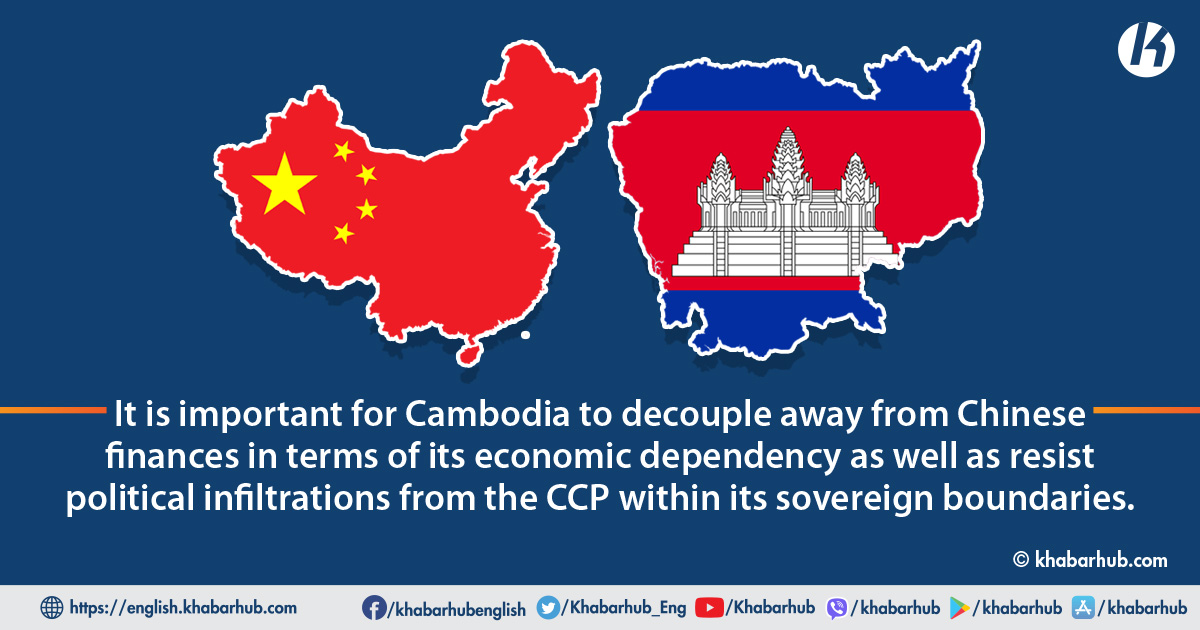China’s regional claim to superiority has begun to take significant shape in the form of encircling Southeast Asian countries.
Its ambitions for becoming not only a regional powerhouse but also a predator in the global arena has prompted many of its neighboring countries to adopt a cautionary approach to closer cooperation with Beijing.
The Chinese Communist Party (CCP) on its part, has initiated its quest for power by intensifying its multitrillion-dollar pet project, the Belt and Road Initiative (BRI), which aims to ascend the Chinese state to becoming the economic powerhouse of the world.
The project, however, has mostly been a contentious prospect of which global financial advisors have generally warned against given the rising case of debt traps in Beijing’s endeavor.
China’s ability to trap credit-taking nations is understood to be an economic bait in order to influence power over economically volatile countries.
A specific example within the Southeast Asian region has been China’s aim to forge closer ties with Cambodia.
Cambodia in this case seems to be among the ones that has presented Beijing with the opportunity to topple the prevailing status quo in the region.
Many analysts have concluded that Cambodia’s close alignment with China has come at the expense of its traditional ties with Western countries.
Moreover, not only has this hampered Cambodia’s ability to pursue an independent foreign policy but has pushed it further as a probable ally to the Chinese revisionist approach in the global arena and more so in the South China Sea dispute.
China’s increasing economic and strategic interests in Cambodia have also led to debates about the detrimental implications for the regional balance of power in the region.
Cambodia also holds a vital place for China’s regional strategic policy where it acts as a perfect zone to expand Chinese influence in the region. China is also attempting to undertake security cooperation which will enhance its stake in Cambodia’s decision-making processes.
According to recent reports, China provided US$84 million to Cambodia as military assistance in 2019 alone, apart from the regular annual military exercises that it undertakes as part of closer cooperation in order to strengthen the military ties between the two countries.
In China’s hawkish outreach to Cambodia, also lies the underlying encirclement of its economy.
Economically, approximately 43% of Cambodia’s FDI in 2019 was from China and more than 70% of the country’s infrastructure projects are funded by Chinese firms.
These figures are not only significant in terms of the numbers but are also indicative of the dependence that Cambodia has on Chinese finances.
Above such investments, Beijing has also been a vital source of developmental aid and financial assistance to countries in Southeast Asia but more specifically Cambodia and Laos.
Both countries have been on the receiving end of lucrative bargains and have also joined the Belt and Road Initiative as part of that trade-off.
Cambodia alone had acquired over $860 million as FDI from China up until 2020.
A similar game plan is being charted out with other neighboring countries as well; China has been attempting to build an exclusive partnership with the ASEAN bloc enabling it to push the countries concerned into an economic debt trap.
Beijing’s strategy, apart from Laos and Cambodia up until now has rather failed in the Southeast Asian region.
The benefits of strategic takeovers and a significant stake in decision-making have not been accomplished in the region as compared to how it has played in other regions.
The members of the ASEAN region have rather maintained the balance well with respect to China and have indicated to them that the grouping cannot be lured into Chinese promises.
It is about time that the region realizes the expansionist tendencies the CCP is showcasing, Cambodia must in the advent of such a scenario play a far greater role in preventing Beijing’s aggressive approach in and around its own borders.
The trust deficit that the nations of the Southeast Asian region face against China is a moral reminder of Chinese tactics and has prevented them from giving in to China’s wolf-warrior portrayals.
Beijing, on the other hand, recognizes the importance of having the countries of the region align with their own national interests and has therefore attempted to mend the relations given the history of conflict due to the nine-dash line.
Cambodia in this case seems to be among the ones that has presented Beijing with the opportunity to topple the prevailing status quo in the region.
Therefore, it is all the more important for Cambodia to timely decouple away from Chinese finances in terms of its economic dependency as well as resist political infiltrations from the CCP within its sovereign boundaries.
It is about time that the region realizes the expansionist tendencies the CCP is showcasing, Cambodia must in the advent of such a scenario play a far greater role in preventing Beijing’s aggressive approach in and around its own borders.









Comment